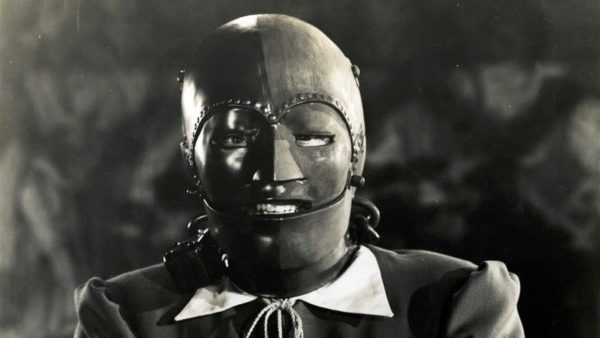The Man in the Iron Mask is a famous novel by Alexandre Dumas; it was made into a Hollywood movie starring Leonardo di Caprio. The book is part of Dumas’ Three Musketeers cycle of novels which covers the adventures of D’Artagnan, Athos, Porthos, and Aramis. In The Man in the Iron Mask, the relationship of the famous foursome is under strain as they fight on opposite sides of a power struggle.
The story begins with Aramis (now a priest) sitting with a prisoner in the Bastille prison. The man is King Louis XIV’s twin brother Philippe and the legitimate heir to the throne. Aramis resolves to help him take the throne and so begins another swashbuckling adventure in typical Dumas style.
Ultimately, Louis forces Philippe to wear an iron visor; if he removes it, he will be executed. While it is a fine tale, it is based on real events because there actually was a masked man concealed in various prisons for approximately 34 years. While his identity remains a secret, an increasing number of historians believe they know who he was.

The Real Man in the Iron Mask
Dumas based his novel on the real-life story of a man who was arrested in 1669 or 1670 and held in a variety of prisons including the Bastille until his death in 1703. In what was a bizarre situation, the prisoner had the same jailer throughout his sentence (Benigne Dauvergne de Saint-Mars) and never removed his mask. While Dumas wrote that the prisoner wore a mask of iron, most historians now believe it was made from black velvet.
The plight of the prisoner came to light in 1698 after he was languishing in a prison in Savoy. The masked man quickly became the talk of Paris as various theorists tried to work out his identity. Dumas wrote that the man was King Louis XIV’s twin brother who was born seconds before the monarch. This meant the prisoner was the legitimate ruler of France. However, even Louis refused to break the convention that stated you could not kill a prince of royal blood. As a result, the unfortunate royal spent decades in prisons across France and Italy.
The legendary writer Voltaire was imprisoned in the Bastille in 1717 and claimed the prisoner wore a mask of iron since 1661. He suggested the man was the illegitimate brother of Louis XIV. However, the claims of Voltaire and Dumas don’t stand up to scrutiny. The earliest accounts of the man in the iron mask date from 1669 when Saint-Mars, then the governor of Pignerol Prison, received a letter from the Marquis de Louvois. In the letter, the Marquis wrote that a man named Eustache Dauger was getting transported to the prison and outlined a series of special requests.
First, Dauger was to be placed in a cell with several doors which closed upon one another to prevent anyone from hearing anything the prisoner had to say. Saint-Mars was told he could only see the prisoner once a day to provide his daily food, drink and anything else he wished. If Dauger spoke about anything other than his needs, Saint-Mars had to execute him. Finally, the Marquis suggested that because the man was ‘only a valet,’ he wouldn’t require much. It does appear as if Dauger is the most likely suspect, but not everyone is convinced.

